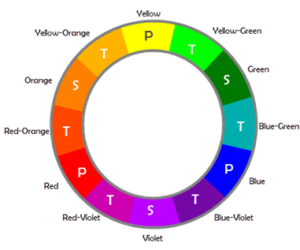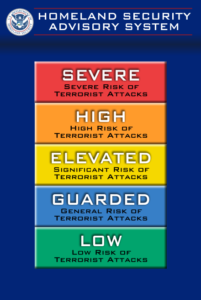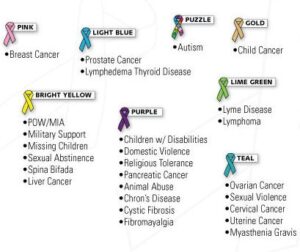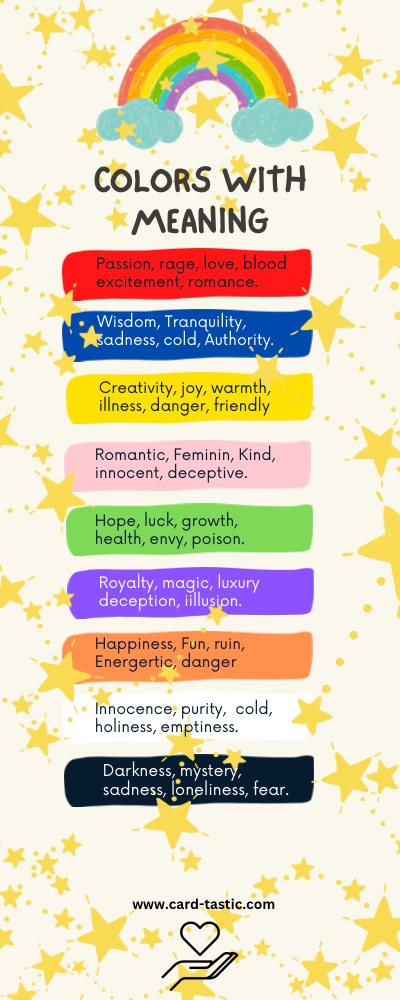I know we all love colors, and there are so many combinations of them. Some people are truly 🌈 rainbow oriented, and design, based on the colors and spectrum of the rainbow. Others have their own methods of how they put colors in order, (eg. RGB vs RYB) and others are sporadic and throw color to the wind and have a more chaotic approach. There are seven colors in the rainbow: red, orange, yellow, green, blue, indigo and violet. The acronym “ROY G. BIV” is a handy reminder for the color sequence that makes up the rainbow, with that said In the 17th century, Isaac Newton realized that, when we break white light apart using a prism (or rain drops), we get the visual spectrum of colored light (otherwise known as the rainbow).

So why bring the color spectrum up, well colors have been part of the design and art world for centuries and I think we should at least know about the rainbow spectrum, just as we should know about other color methodology.
Primary Colors
A set of primary colors consists of colorants or colored lights that can be mixed in varying amounts to produce a gamut of colors. This is the essential method used to create the perception of a broad range of colors in, e.g., electronic displays, color printing, paintings and art forms. The 3 Base Primary Colors are: Red, Yellow, Blue. (RYB) Some may argue that White and Black are primary colors, but I was taught they are NOT, given White is the absence of any color and Black is the combination of all colors.
The Color Wheel
- Three Primary Colors (Ps): Red, Yellow, Blue.
- Three Secondary Colors (S’): Orange, Green, Violet.
- Six Tertiary Colors or complementary (Ts): Red-Orange, Yellow-Orange, Yellow-Green, Blue-Green, Blue-Violet, Red-Violet, which are formed by mixing a primary with a secondary

Showing “Primary – Secondary – Tertiary” Colors.
CMYK – RGB
RGB, CMYK and why? The color incorporated by printing, computer monitors or tv’s etc… is commonly known as subtractive combination of colors, as in mixing of pigments or dyes for printing, the CMYK set of primaries is often used. In this system the primary colors are Cyan, Magenta and Yellow. The K stands for Kohle, (German for coal) which is used to represent Black. The additive primaries are Red, Green and Blue, Because of the response curves of the three different color receptors in the human eye, these colors are optimal in the sense that the largest range of colors — a gamut — visible by humans can be generated by mixing light of these colours. Additive mixing of red and green light, produce shades of yellow or orange. Mixing green and blue produces shades of cyan, and mixing red and blue produces shades of purple and magenta. Mixing equal proportions of the additive primaries results in shades of grey; when all three colors are fully saturated, the result is white. The colorspace that is generated is called the RGB (“red, green, blue”) color space. Okay so let’s move on… I am sure you understand color theory basics enough now.
Colors also have many symbolic and theoretical and other meanings so here are some examples of those.
Codes of Color
Colors are used to signify codes in many aspects of daily life, the most common we know of is the simple traffic light! Red means Stop 🔴 Green means Go 🟢 Yellow means Caution 🟡. The traffic light 🚦 always has red on top, yellow in the center and green on the bottom or if the traffic light 🚥 is sideways red is left, yellow is center and green is right. This sequence is the same in every country that uses traffic lights.
The earliest examples of color codes in use are for long-distance communication by use of flags, as in Semaphore communication. (Read more about it via the link). Colors codes are also used in hospitals, armed forces, police – fire – ambulance departments, schools, library’s, stores, sports and racing, government bodies, electrical and technical wiring, pills and medications, labs and so much more. Color coding is used every day of our lives and we probably never even realized it. Since 9/11 we have used a color code on a daily basis thanks to Homeland Security Advisory System Code.

We use colors for ribbons and prizes, 1st place is Blue, 2nd place is Red and 3rd place is Green or Yellow, with white used as a participation ribbon. We also use colors to represent issues, like causes, illness, other medical issues with colored ribbons and pins.

Another great use of colors is very symbolic like Colors & their meanings. These are varied all over the world, and they vary within psychological, astrological, spiritual, historical, and other areas as well. Some are extensive and use all the primary, secondary and tertiary colors as well as many more, while others stick to just the color wheel or just primary and secondary colors including white and black.
Symbolic Color Meanings
RED
The color of passion and energy. Red draws attention like no other color and radiates a strong and powerful energy that motivates us to take action. It is also linked to sexuality and stimulates deep and intimate passion. Red is ubiquitously used to warn and signal caution and danger
ORANGE
The color of enthusiasm and emotion. Orange exudes warmth and joy and is considered a fun color that provides emotional strength. It is optimistic and upliftning, adds spontaneity and positivity to life and it encourages social communication and creativity. It is a youthful and energetic color.
YELLOW
The color of happiness and optimism. Yellow is a cheerful and energetic color that brings fun and joy to the world. It makes learning easier as it affects the logical part of the brain, stimulating mentality and perception. It inspires thought and curiosity and boosts enthusiasm and confidence, it is commonly linked to being cowardly or illness and disease.
GREEN
The color of harmony and health. Green is a generous, relaxing color that revitalizes our body and mind. It balances our emotions and leaves us feeling safe and secure. It also gives us hope, with promises of growth and prosperity, and it provides a little bit of luck to help us along the way
BLUE
The color of trust and loyalty. Blue has a calming and relaxing effect on our psyche, that gives us peace and makes us feel confident and secure. It dislikes confrontation and too much attention, but it is an honest, reliable and responsible color and you can always count on its support.
PURPLE
The color of spirituality and imagination. Purple inspires us to divulge our innermost thoughts, which enlightens us with wisdom of who we are and encourages spiritual growth. It is often associated with royalty and luxury, and its mystery and magic sparks creative fantasies
PINK
The color of love, romance and compassion. Pink is kind and comforting, full of sympathy and compassion, and makes us feel accepted. Its friendly, playful spirit calms and nurtures us, bringing joy and warmth into our lives. Pink is also a feminine and intuitive color that is bursting with pure joy.
WHITE
The color of purity and innocence, it always associated with birth, beginnings, weddings & marriage, spirituality and holiness. White is a true balance of all colors and is associated with cleanliness, simplicity and perfection. It loves to make others feel good and provides hope and clarity by refreshing and purifying the mind. It also promotes open-mindedness and self-reflection.
BLACK
The color of power and sophistication. Black is an incredibly strong and intimidating color that exudes authority and makes us feel secure and protected. Often seen at formal and prestigious events, this mysterious marvel arouses and seduces our senses with its elegance and sexiness.
I hope this opened you up to a little more about our world of colors, Below is a very basic fun chart I put together, with some of the chosen words associated with each color. Enjoy and Happy Crafting.
Color Meaning Chart
